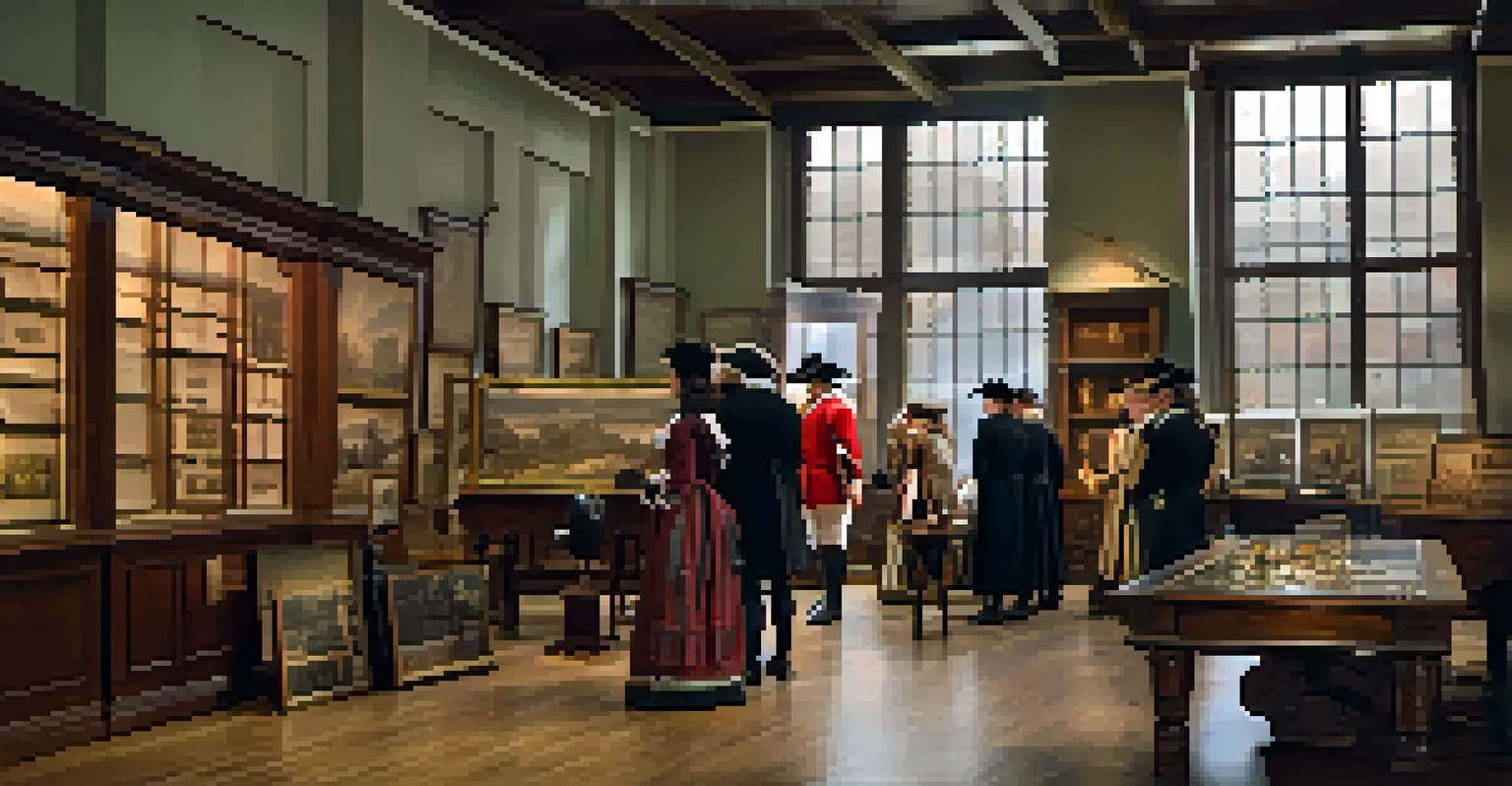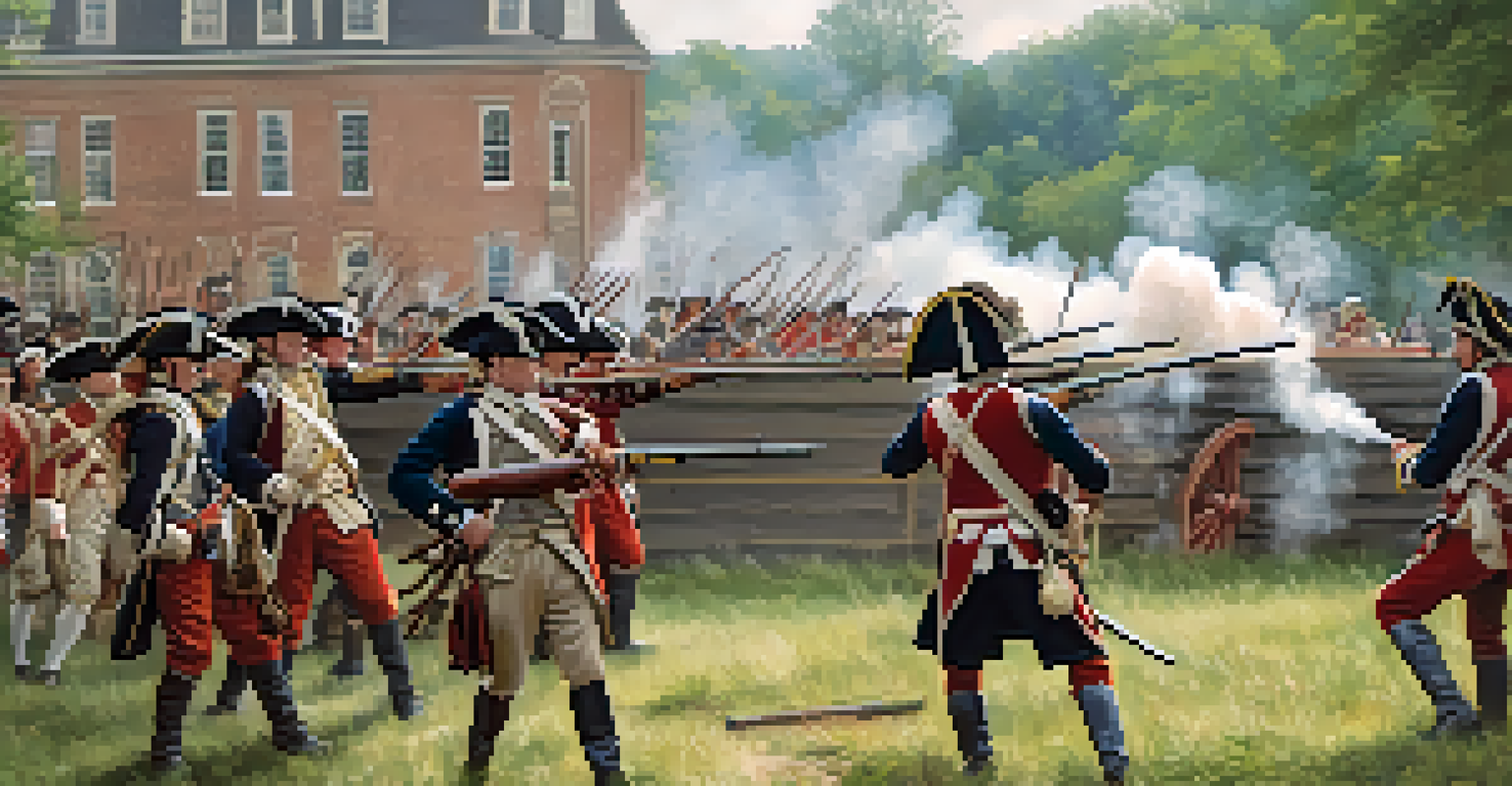The Legacy of Pittsburgh's Fort Pitt and Its Historical Impact

Introduction to Fort Pitt: A Historical Overview
Fort Pitt, established in 1758, is a cornerstone of Pittsburgh's history. Nestled at the confluence of the Allegheny and Monongahela rivers, this fortification played a pivotal role during the French and Indian War. It served as a strategic military outpost, helping to shape the region's future.
History is not a burden on the memory but an illumination of the soul.
The fort's location was not just a mere coincidence; it was chosen for its commanding view and access to water routes. This made it an essential hub for trade and military logistics. The fort's construction marked the beginning of Pittsburgh as a significant settlement in America.
Understanding Fort Pitt is crucial to appreciating Pittsburgh's development and its rich cultural tapestry. Its history encapsulates themes of conflict, colonization, and the quest for territorial control, which were prevalent in 18th-century America.
The Role of Fort Pitt in the French and Indian War
Fort Pitt's significance during the French and Indian War cannot be overstated. It became a crucial stronghold for British forces as they battled the French and their Native American allies. The fort's presence helped shift the balance of power in the Ohio Valley region.

By serving as a base for military campaigns, Fort Pitt facilitated key victories that would ultimately lead to British dominance in North America. The fort was a gathering point for troops and supplies, making it indispensable to the war effort.
Fort Pitt's Role in Key Wars
Fort Pitt was a crucial military stronghold during both the French and Indian War and the American Revolution, shaping the outcomes of these conflicts.
This tumultuous period not only influenced military strategies but also altered relationships between different cultures. The interactions at Fort Pitt highlighted the complexities of colonial expansion and the impact of European conflicts on indigenous populations.
Fort Pitt and the American Revolution
As the American Revolution approached, Fort Pitt found itself at the center of new conflicts. It played a strategic role in the struggle for independence, serving as a supply depot for the Continental Army. Its resources were vital for the fight against British rule.
The past is never dead. It's not even past.
The fort's garrison defended the frontier, which was crucial in maintaining control over the western territories. It became a rallying point for revolutionary sentiments, fostering a sense of unity among colonists fighting for their rights.
Fort Pitt's legacy during this era illustrates the fort's evolution from a military outpost to a symbol of American resilience. Its historical significance is still celebrated today, reminding us of the sacrifices made for freedom.
Cultural Impact of Fort Pitt on Pittsburgh
Beyond its military importance, Fort Pitt has left a lasting cultural legacy on Pittsburgh. The fort's existence has influenced the city's development, shaping its identity and community spirit. Today, it stands as a reminder of the rich tapestry of stories that make up Pittsburgh's history.
Local festivals, educational programs, and museum exhibits celebrate the fort's role and its impact on the region's heritage. These initiatives help keep the history alive, fostering pride among residents and educating visitors about the past.
Cultural Legacy of Fort Pitt
The fort's history has significantly influenced Pittsburgh's identity, fostering community pride and cultural initiatives that celebrate its past.
The fort has become a symbol of resilience and community, echoing the struggles and triumphs of those who came before. Its story is woven into the very fabric of Pittsburgh, making it an essential part of the city's cultural narrative.
Fort Pitt's Architecture and Historical Significance
The architectural design of Fort Pitt reflects the military strategies of its time. Built using a star-shaped layout, it was fortified against potential attacks, demonstrating the ingenuity of colonial military engineering. This design has influenced subsequent fortifications across the country.
Today, the remaining structures and artifacts at the Fort Pitt Museum offer valuable insights into 18th-century military life and construction techniques. They serve as a tangible connection to the past, allowing visitors to visualize life during a pivotal era in American history.
The preservation of Fort Pitt's architecture underscores the importance of historical sites in understanding our collective heritage. It invites exploration and appreciation for the craftsmanship and strategic thinking of those who built it.
Reenactments and Education: Bringing History to Life
Fort Pitt has become a vibrant site for historical reenactments, allowing visitors to experience the past firsthand. These events bring together enthusiasts who recreate battles and daily life from the 18th century, transforming the fort into a living history museum. This immersive approach deepens understanding and appreciation of historical events.
Educational programs hosted at Fort Pitt engage students and families, fostering a sense of curiosity about history. Through interactive learning, participants gain insights into the challenges faced by those in earlier times, making history relatable and relevant.
Architectural Significance
Fort Pitt's star-shaped design reflects 18th-century military engineering and provides insights into the historical context of its construction.
By bridging the gap between past and present, Fort Pitt's reenactments and educational initiatives ensure that the legacy of this historic site continues to inspire future generations. They serve as a reminder of the power of storytelling in preserving our history.
The Legacy of Fort Pitt in Modern Pittsburgh
Today, Fort Pitt stands as a symbol of Pittsburgh's resilience and growth. It reminds us of the city's tumultuous past and its journey toward becoming a vibrant urban center. The fort's legacy is reflected in the city's culture, architecture, and community values.
As Pittsburgh continues to evolve, the stories of Fort Pitt remain relevant. They inspire pride in local heritage and encourage dialogue about the complexities of history, including themes of conflict, cooperation, and cultural exchange.

The ongoing preservation efforts and community engagement surrounding Fort Pitt ensure that its legacy will not be forgotten. By honoring the past, Pittsburgh embraces a future that recognizes the importance of its historical roots.